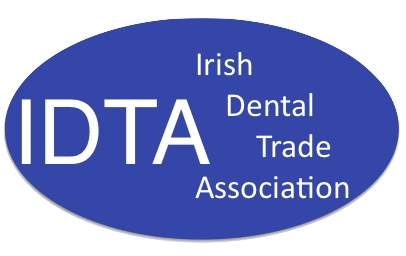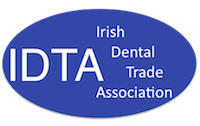By Aaron Berger, BS, and Monica Borris, DMD
How do external factors affect the dental profession? This Colorado dentist and her marketing manager have done their homework, and they share their findings to help other dentists grow their practices.
Porter’s Five Forces is a concept that considers external influences that impact an industry, as well as intra-industry factors that culminate into competition. It confers a macroscopic understanding of any industry. The forces considered are ease of entrance, abundance of substitutes, power of suppliers, power of consumers, and intra-industry rivalry. This analysis allows us to conclude how competitive the industry is, and to create methods for success.
Ease of entrance
This is an external force that examines how easy it is to set up a private dental practice. Overall, it is moderately difficult. Let’s put this into perspective. Many dentists audibly gasp when reminiscing about rigorous schooling, financing and incorporating their practice, building a high fidelity advisory team, and managing employees. But, contrast this to the complexity and magnitude of starting a company to compete against Apple and other companies in the worldwide manufacturing of consumer electronics. The industry is composed of competitors with numerous proprietary protections, enormous marketing budgets fueling brand equity, tight government regulations, and inconceivably large investments that bear considerable financial risk. Contrast this to a coffee shop with two drip machines and breakfast sweets. Not downplaying those businesses on that entrepreneurial route, but it is relatively easy to have a coffee startup. Becoming successful is a whole different story.
For the dental industry, the diagram on the right illustrates the roadblocks of opening up a practice, and the extent to which they discourage potential competitors. Brand equity is the most convoluted component. For brevity’s sake however, proper branding can build loyal patients. (1) But it is often executed improperly and consumers might switch for many reasons other than loyalty.
Buyer power
Let’s be concise here: buyers have low power. One simple explanation is that you probably don’t allow your patients to haggle. Some factors that give consumers a small degree of power include:
● Number of alternatives—Simply put, the more dentists there are, the less power any individual dentist has over the consumer.
● Disposable income—This isn’t necessarily subject to the individual consumer. It’s a derivative of GDP, price indices, and market sentiment.
● Knowledge—This gives buyers more control to leverage better deals and to “shop” for providers. This might be an issue dentists face with the wealth of information available today, but is far from being substantially threatening.
Supplier power
This is another area where dentists have a large amount of control—supplier power is low. Suppliers don’t push their inventory, rather their supply is pulled through. This means companies such as Henry Schein experience derived demand. Without the dentist, whom do they sell to? Additionally, there are many supply companies fighting over market share through price differentials, which is not a sustainable competitive advantage. It’s often not difficult for dentists to switch suppliers either.
Labs should also be considered. They have a bit more control since they produce necessary prosthodontics at a price that likely isn’t negotiable. However, with the rise of cheaper alternatives coming from manufacturing-driven countries, they are facing downward price pressure and diminishing bargaining power.
Threat of alternatives
This component has a very low force on the industry. Every dentist should smack his or her forehead if anyone claims otherwise. What alternative is there for dentists? Homeopathic remedies perhaps?
Industry rivalry
The industry itself is moderately competitive. We can attribute this to the high degree of fragmentation; there are many practices with a minute market share. This forces dentists to adopt a sustainable competitive advantage, such as cornering a niche, lowering overhead, using advanced technology, creating unique marketing content, and other tactics. This comes with a very comforting caveat—the industry is growing above the pace of the economy, and its profit margins are nearly double the “all industries average.”(2) Yes, your overhead isn’t that bad!
Takeaways
Hopefully this analysis has broadened your macroscopic understanding of dentistry. You can use this knowledge as a backbone for strategizing. It also brings about some keys points of success to thrive within this growing industry.
The following is far from secret information. I don’t have some “amazing, revolutionary, profit-churning” idea that will elevate your practice to the top tier of success. But I believe that marketing programs that promise solutions to quickly increase profitability are sales-driven malarkey. I can say on behalf of other ethical professionals, there are no “one-size-fits-all” or easy changes that instantly increase profitability. Rant aside, here are some ideas on private practice success that should resonate with you.
Operational control
Operational control requires active management techniques of systemic delegation, not micromanaging or laissez-faire attitudes. Additionally, you should have adequate training, guides, and standards for quality in place for your practice. These quality standards should be monitored, and implement feedback mechanisms complemented by reward systems. Adopt a management style that integrates well with your brand, employees, patients, and yourself.
Overhead control
Many dentists fret tirelessly, and some are quick to buy solutions in an attempt to reduce overhead. Let’s get real for a second: there are no shortcuts to reduce overhead for an already efficient practice. The efficient practice is one that uses its resources properly, budgets appropriately, and has effective logistics and communication. Unless you are truly overstaffed, spending too much on supplies, or not taking advantage of possible tax breaks, there isn’t much that will dramatically increase profit margins. However, there is still light at the end of the overhead tunnel!
The following methods address this issue, but be forewarned that they not are simple, and may be even impossible for your situation.
● Achieving economies of scale—To put this into simple terms, you are spending X dollars per month no matter what you do. These are fixed costs, like your lease. Raising volume of production minimizes the ratio of fixed costs to production. Dental practices today are achieving this by forming management groups, which is certainly a controversial topic for some. From a purely financial overhead analysis standpoint, it is quite cost effective.
● Reaching the right patients—Not all patients are equally as profitable, and their lifetime value can be assessed relatively easily. Your marketing should hone in on the customers with the highest lifetime value. Consult with a professional who has your best interests in mind and let him or her navigate your ship, but with the wheel in your hands. This will allow you to build up a high CLV and high profit margin customer portfolio based on your practice and abilities. Viola!
● When you invest, learn what you’re paying for—Here’s an example: don’t pay for a cash flow seminar that you have to spend thousands to go to. It happens all too often in the dental industry, where experts claim to have proprietary knowledge that will increase the profitability of your practice. They will throw technical terms at you, make you feel pressured, and before you know it you have a contract in front of you. As a dentist, you deal with technical terms that sound foreign to patients. But as an ethical professional, you explain these concepts to your patients. Have your marketing, accounting, or other business advisors done this for you? I don’t suggest you take it upon yourself to to perform these duties yourself, but just know what you’re paying for.
Other keys
Customer loyalty and ease of access come hand in hand. Location is a component of these two factors. However, real estate is no longer associated with tangibility. Elements such as like search engine optimization, pay per click advertising, and creating unique content are effective tactics for brand building.
Lastly, don’t lag behind in technology. This concept is simple: stay up-to-date with the latest technology, but purchase it wisely. Invest in items that increase your productivity and potential volume, not in technology that simply makes your office appear more chic.


